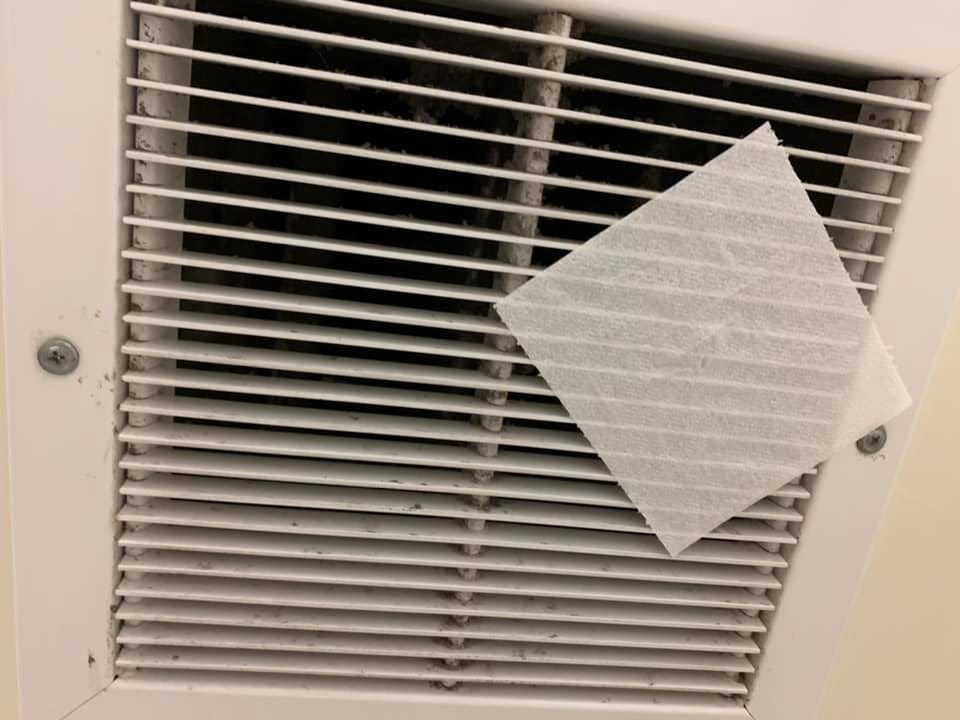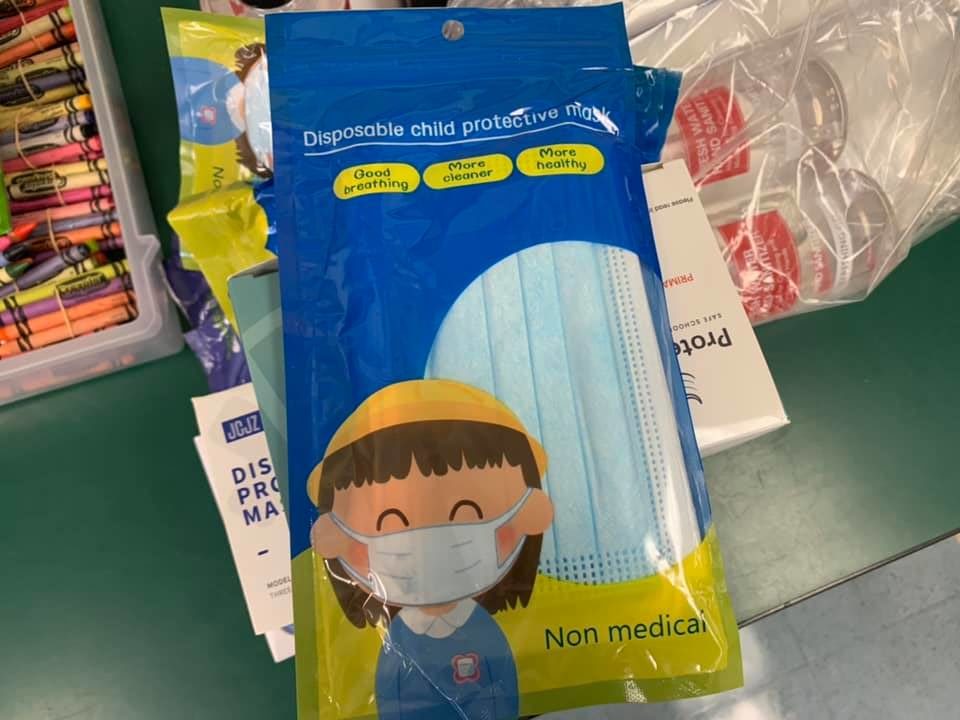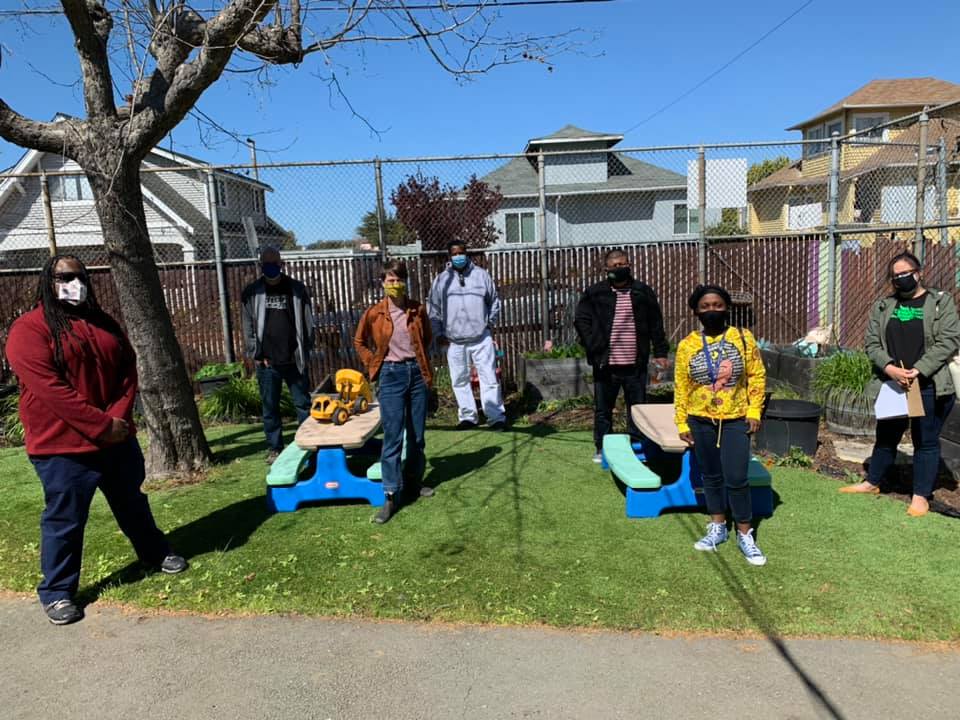
Manzanita SEED safety walkthrough with school site Safety Lead and librarian extraordinaire Mr. Todd Davis, Building Trades Council Chief Steward David Hunter, Oakland Unified School District Director Hutchinson, Manzanita SEED teacher Olivia Udovic, Administrative Assistant Rocio Gutierrez, OEA President Keith Brown, and OEA representatives Ish Armendariz, Shelby Ziesing, and Becky Flanigan. OEA Second Vice President Second Vice President and Bargaining Chair Chaz Garcia was also in attendance.
Since members of the Oakland Education Association (OEA) approved their agreement with 1,024 votes, OEA leadership has been steadfast in ensuring all multilayered safety measures are in place and enforced for staff return on April 14 and in-person instruction with students on April 19. OEA believes that phasing in student return on April 19 allows for all educators to complete their vaccinations, if they so choose, and for the state’s targeted vaccination program to reach our most vulnerable communities. OEA leaders started the safety walkthroughs with schools in ZIP codes most impacted by COVID-19: 94601, 94603, and 94621.
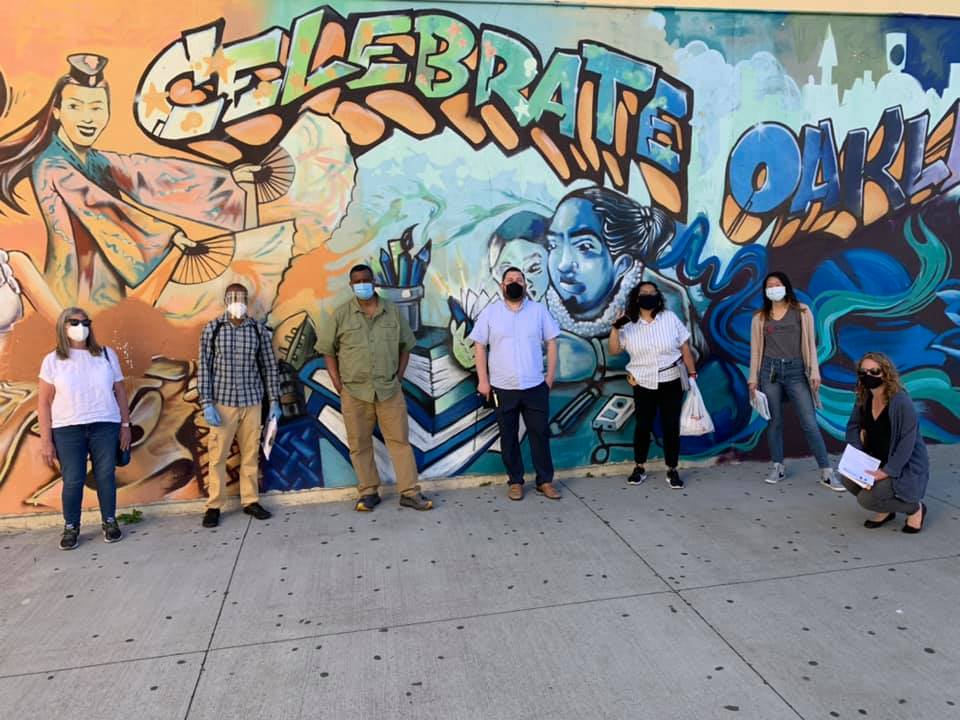
OEA joined an Elmhurst United Middle School (EUMS) parent, the school site safety lead, several teachers, Mr. Christopher (a central office safety representative), Hunter, OEA’s regional lead Shula Bien and Executive Board Member Jennifer Brouhard for a safety walkthrough at Elmhurst United Middle School.
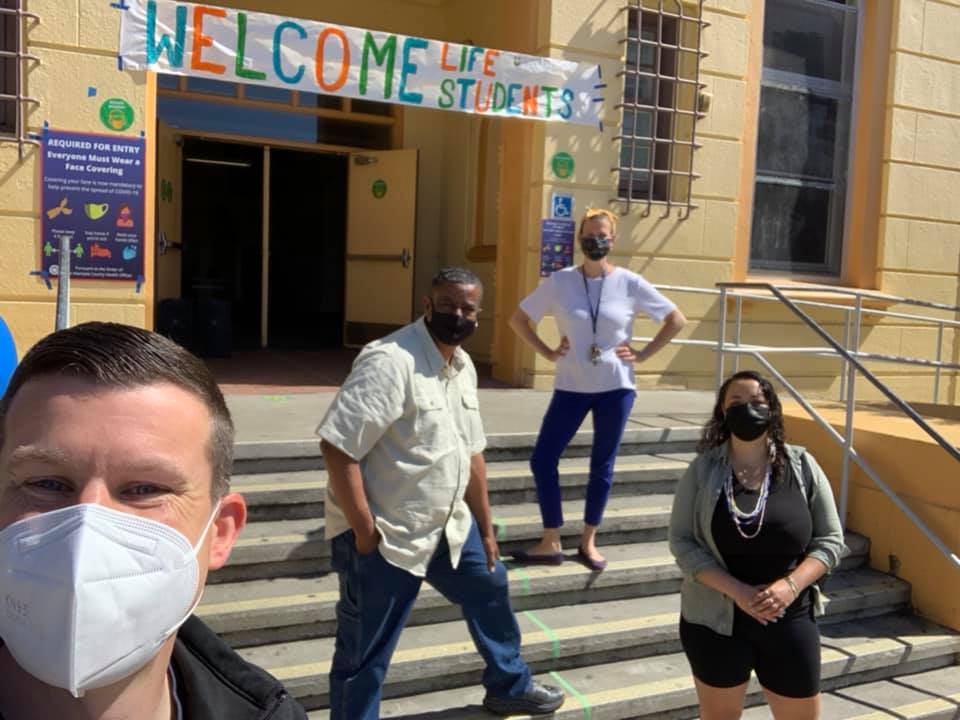
CTA staff and OEA Co-Executive Director John Green, Co-Principal Salazar Bowman, OEA school site representative Amy Ortiz, and Hunter conduct a safety walkthrough at Life Academy.
“Recognizing that communities of color have been disproportionately impacted by the pandemic, OEA’s approach was to follow an equity-based funding model that prioritizes the distribution of resources to those communities,” said OEA Second Vice President and Bargaining Chair Chaz Garcia.
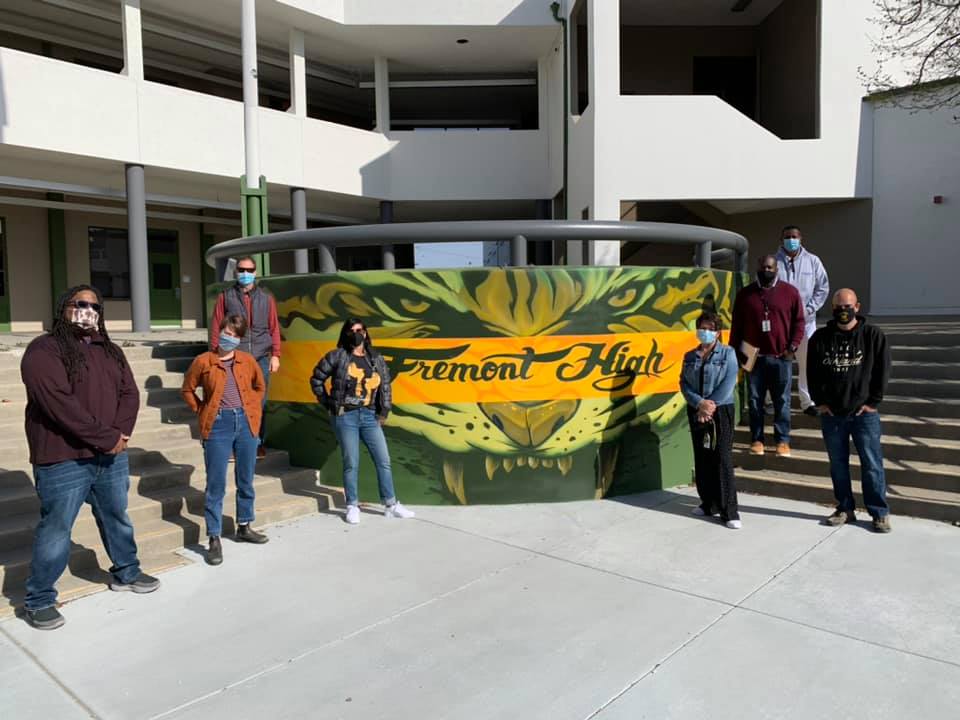
Fremont High School safety walkthrough with Garcia, Brown, Co-Principal Rivera, OEA school site representative Shelby Ziesing, and staff from the Oakland Unified School District.
The pandemic has exacerbated a lot of issues (funding, classroom sizes, ventilation, neglected school buildings, etc.) educators have been battling for decades. Starting from square one was never an option.
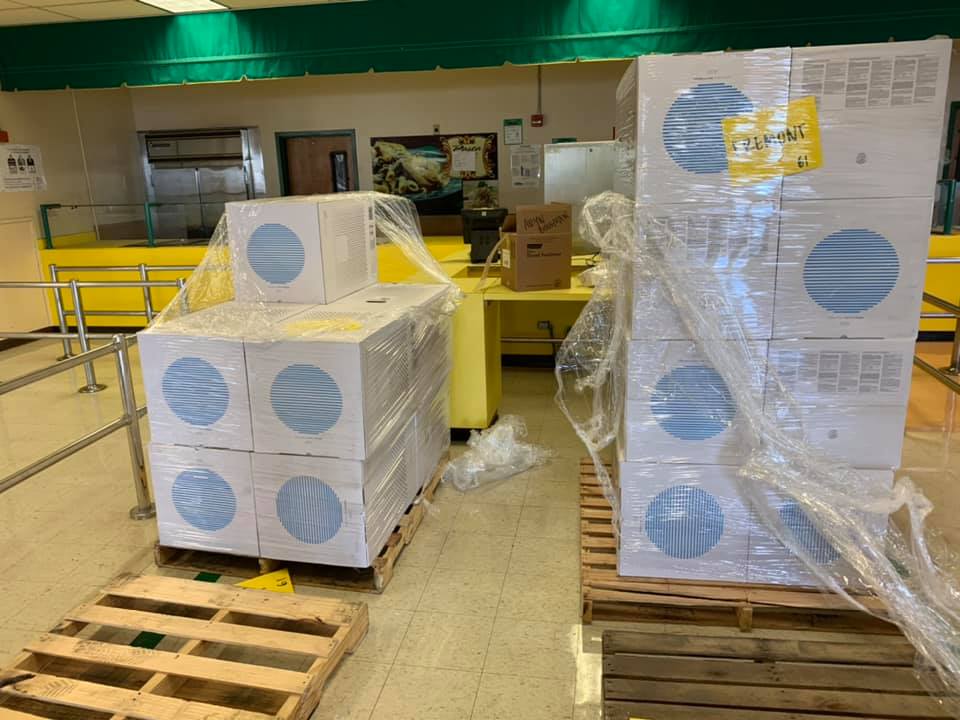
Several pallets of portable HEPA filters to improve indoor air quality in classrooms, offices, and other indoor spaces at Fremont High School.
With what took weeks at the bargaining table to accomplish, OEA leaders are checking to ensure there is personal protective equipment (PPE), adequate ventilation, smaller class sizes for social distancing, testing and tracing programs for students and staff, regular facilities cleaning, and hand washing. OEA’s safety criteria are stricter than those required by state law, so member organizing to enforce these criteria will be crucial. OEA’s safety organizing toolkit has been incremental for a safe reopening at each school site.
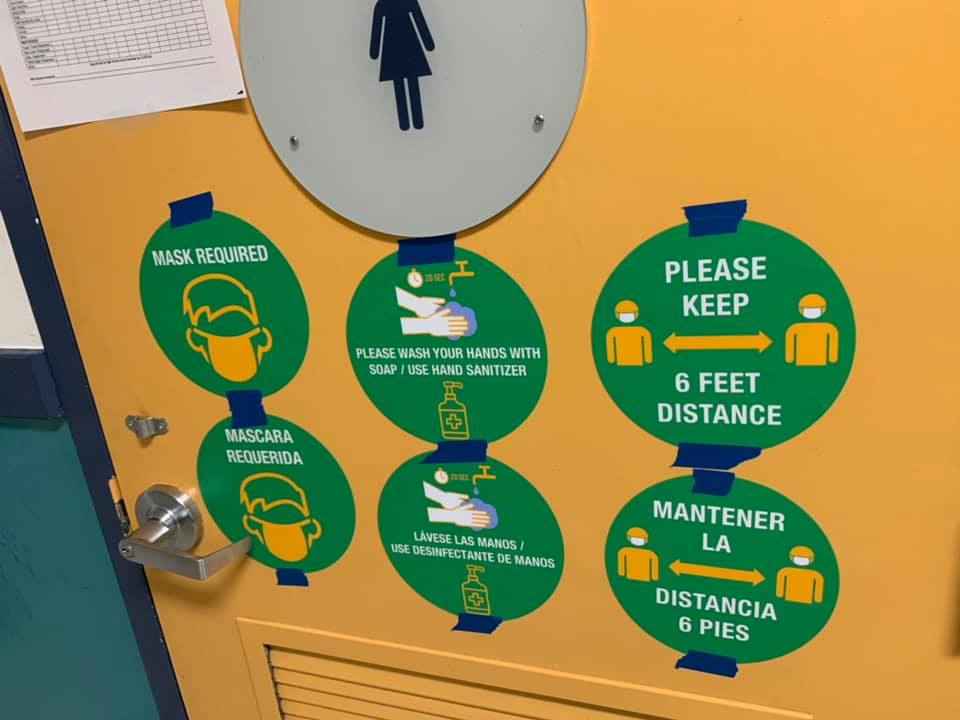
Elmhurst United Middle School following safety protocols – similar photos can be found at other school sites.
“Neighborhood public schools are trusted spaces for people in most communities, and it is up to all of us to keep our community and each other safe. So far what we are seeing at every school site is positive,” said OEA President Keith Brown.
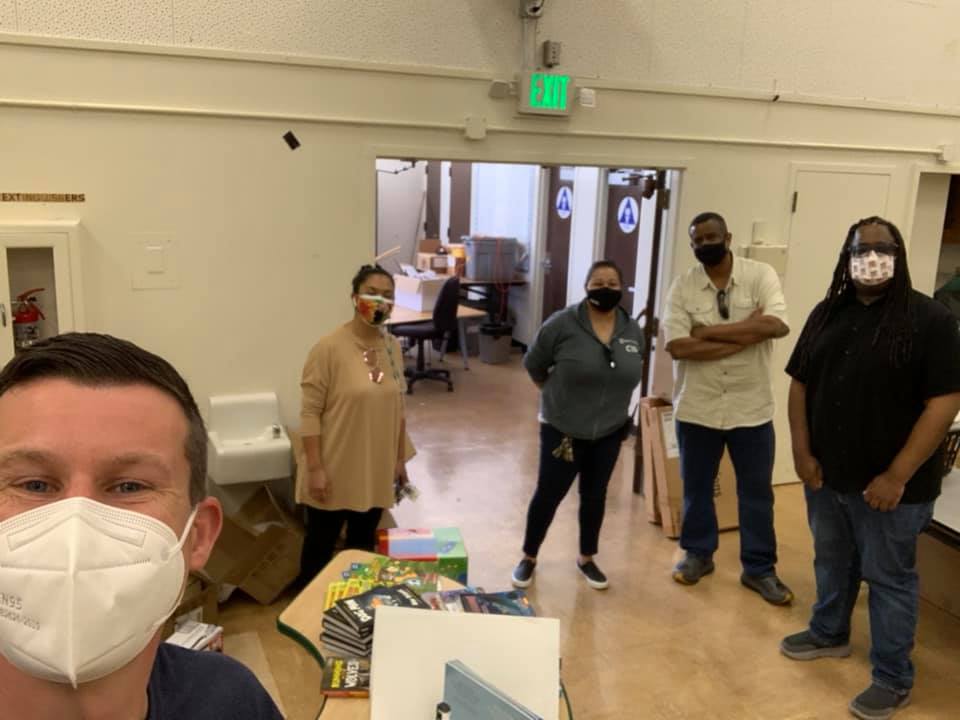
Green, Principal McCray, Assistant Principal Untalan, Hunter, and Brown conduct a safety walkthrough at Futures & CUES at Lockwood.
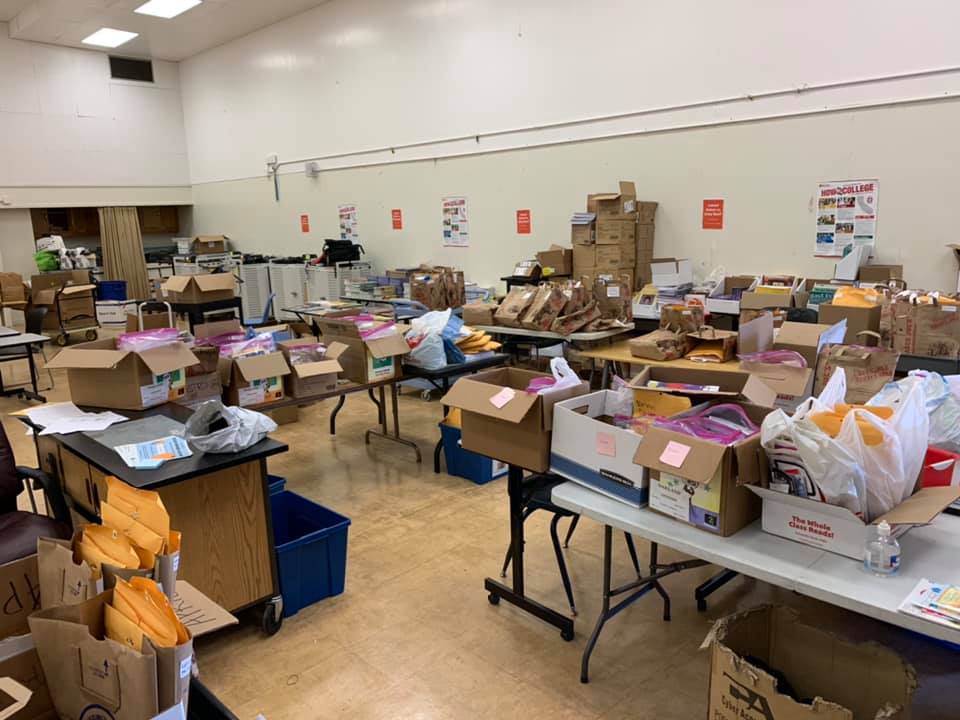
The building is closed, but teaching and learning never stopped! This is a photo of materials distribution to remote learners at Futures & CUES at Lockwood.
When asked if Futures & CUES at Lockwood is following safety protocols, CTA staff and OEA Co-Executive Director John Green said “Every room has HEPA filters, soap and hand sanitizer are available all over, and the school’s PPE supply is ready to go. We also checked on the school’s entry/welcoming procedures (including daily health screener), ventilation, isolation/wellness space for students exhibiting any symptoms, plexiglass in place in the main office, and classroom setup for physical distancing. We even check that bathrooms are set up to limit occupancy in order to maintain social distancing.”
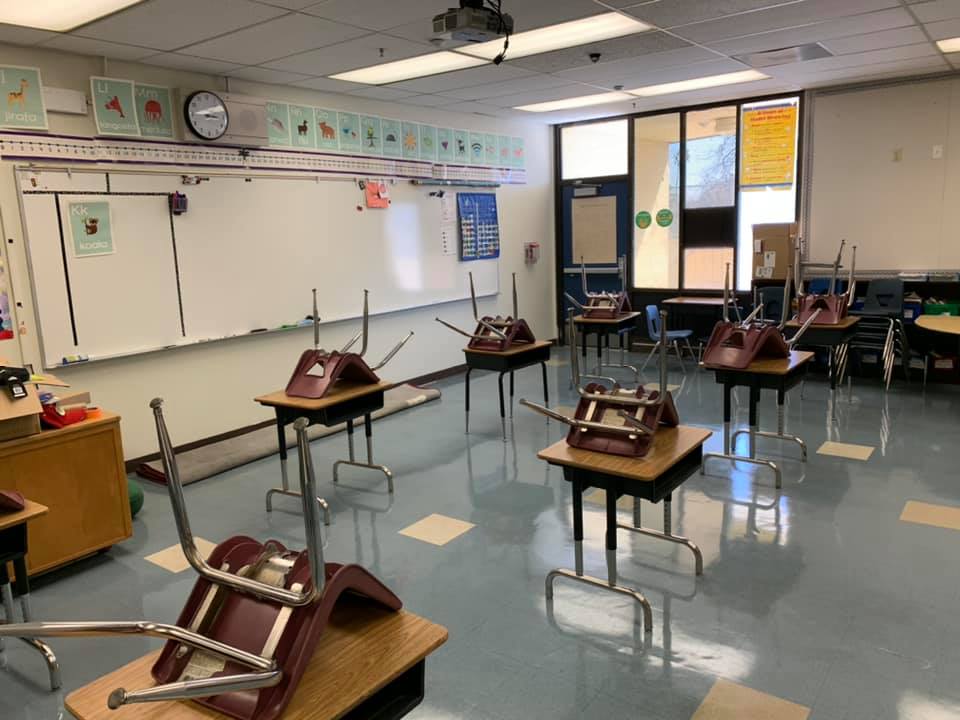
Esperanza Elementary classroom.
“Esperanza upgraded their HVAC several years ago, funded by a California Air Resources Board settlement regarding air pollution. Classrooms have also received portable HEPA filters. Masks and social distancing limit the spread of COVID-19, and strong ventilation prevents the buildup of fine particle aerosols within indoor spaces. There is signage throughout and ongoing dialogue to establish the safest protocols for student arrival, moving to/from classrooms, using restrooms, and more,” said Green.
Together, we must continue to work to mitigate the impact of COVID-19 in Black and Latinx communities who are disproportionately impacted by high COVID-19 death rates (Black death rate 12% higher than statewide; Latinx death rate 20% higher). With greater access to vaccines, educators are looking forward to being back in the classroom with their students and brighter days ahead where everyone is thriving.
